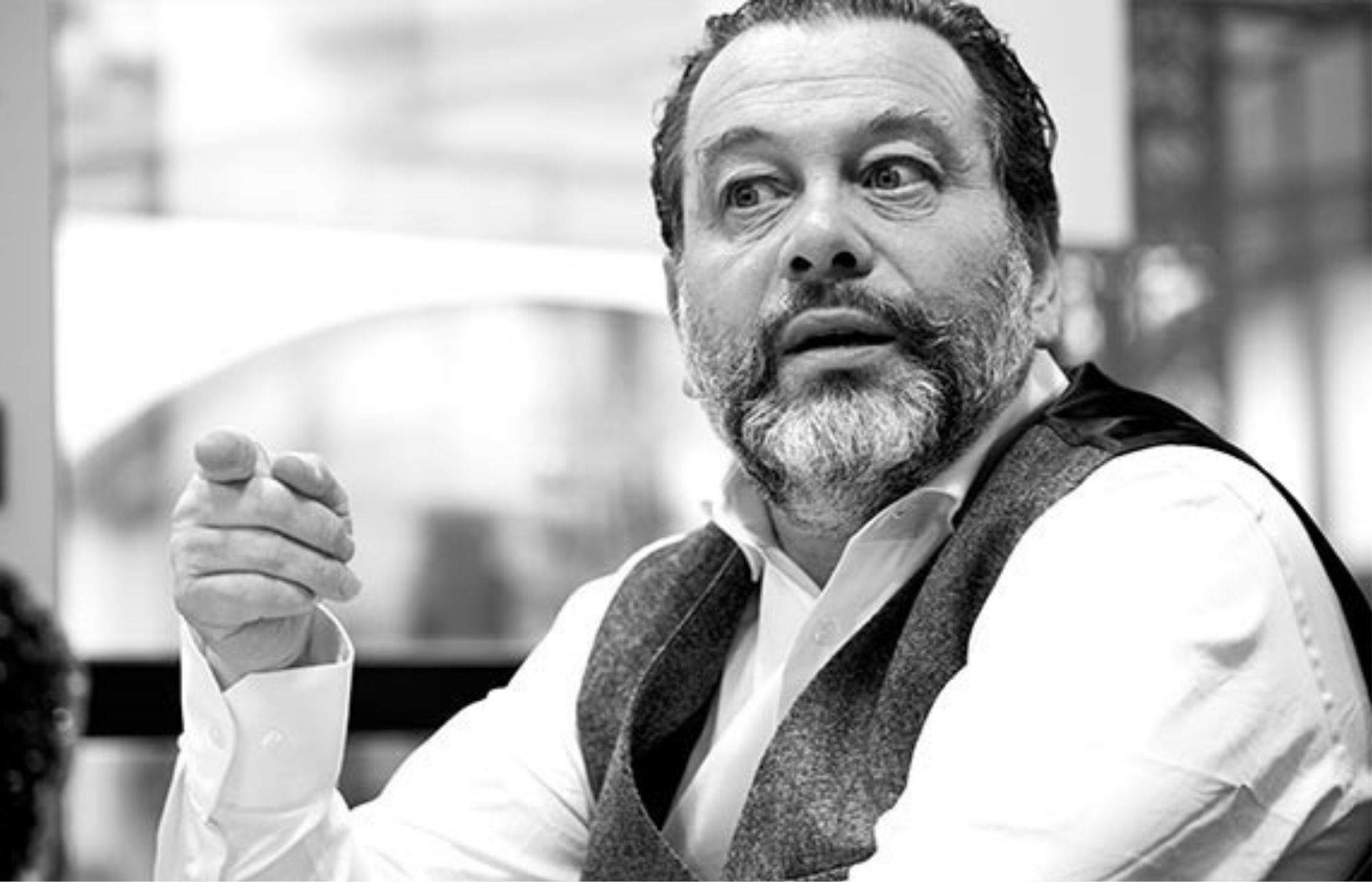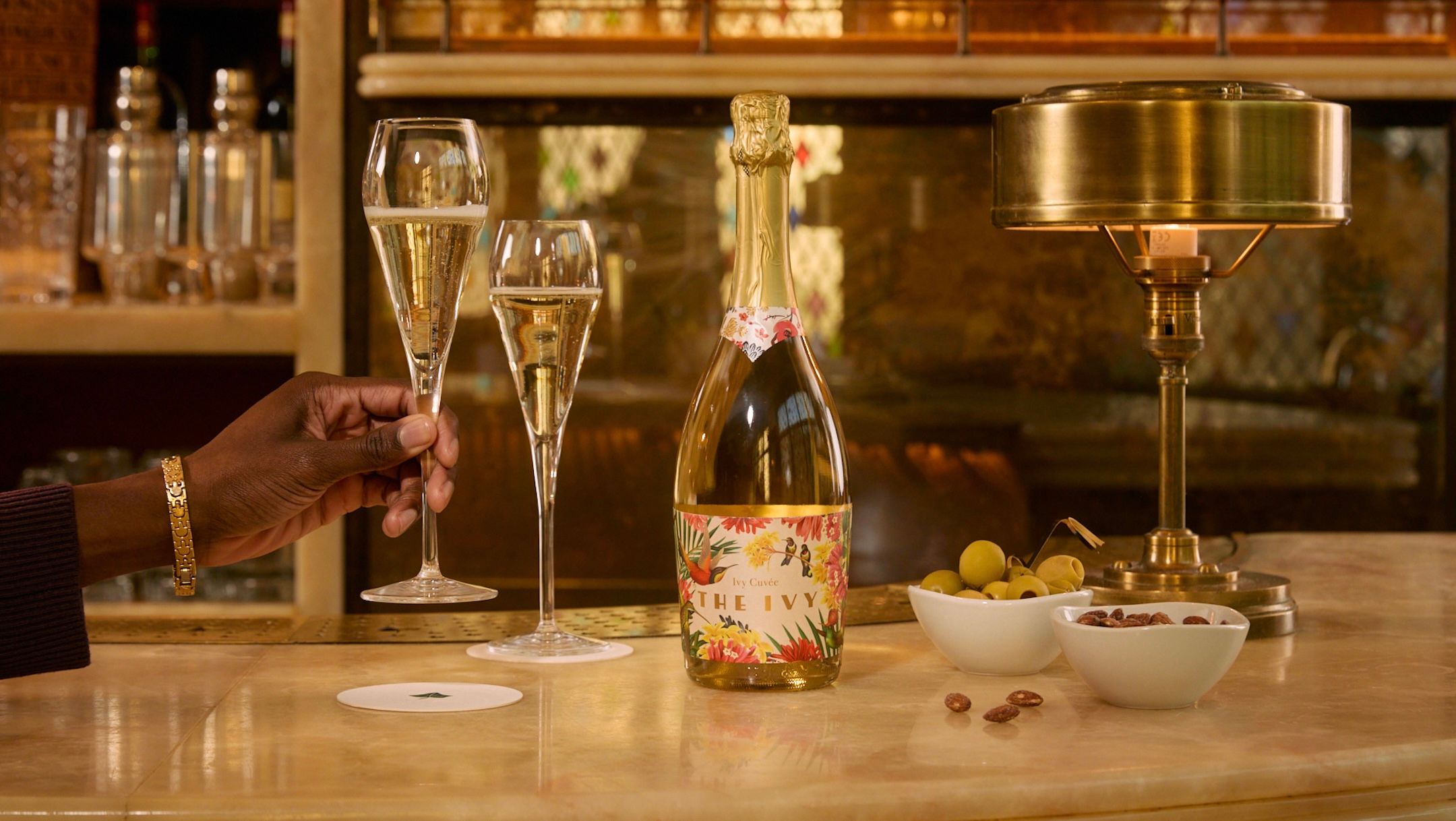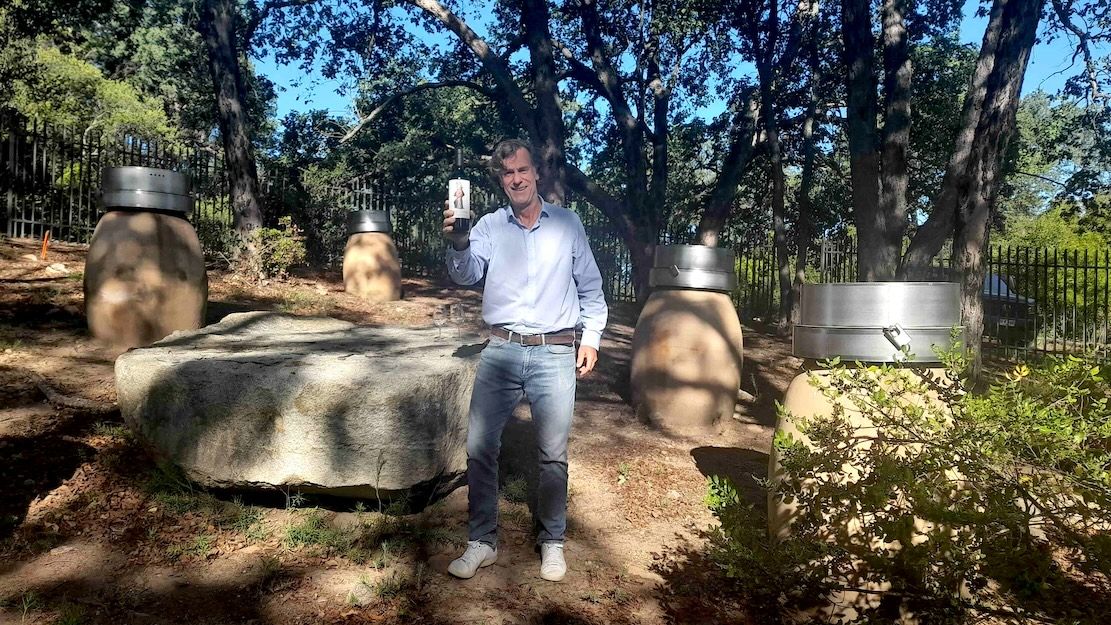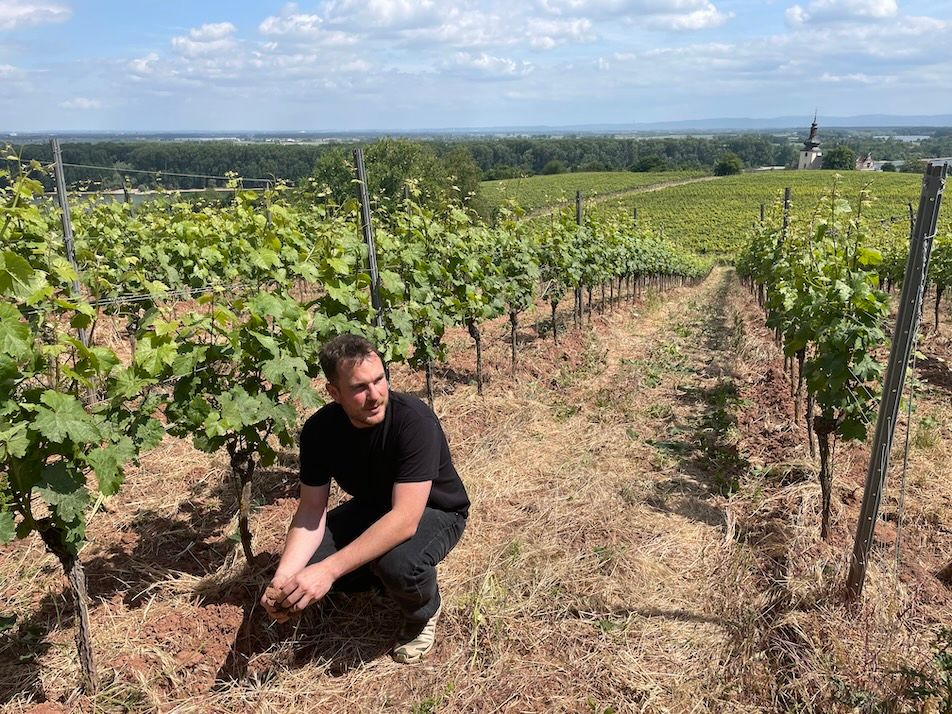“Premiumisation is a huge avenue for the wines of Saint Joseph…” says Chapoutier, “I am willing to bet that in 10 to 15 years’ time that the wines of Saint Joseph will be spoken of on the same level as Cornas or Côte Rôtie.”

Michel Chapoutier, Hermitage tasting, London, August 2022
Ever since I made the switch from pound-a-pint lager at the students’ union to begin drinking and enjoying wine on a regular basis, I’ve known of the name Chapoutier. I’m sure you’re all the same. The company itself was founded way back in 1808, but since its name change in 1955 to M.Chapoutier, this maison and négociant has become one of the names synonymous with the wines of the Rhône Valley. Current owner Michel Chapoutier is also one of the leading names in biodynamic cultivation, having begun conversion way back in 1990.
The company produces some of the finest wines from some of the most famous terroir in the region, including numerous wines from Hermitage, Condrieu, and Côte-Rôtie, amongst others. So, when I was asked to interview Chapoutier about his feelings on Saint Joseph, an appellation still considered by many (myself included at the time I was asked) with scepticism, I was unsure how to approach it. Sure, I couldn’t wait to speak to Michel, but about Saint Joseph? How surprised I was then to find that this lesser appreciated appellation is actually one of Michel’s most prized and enjoyed regions, with the legendary winemaker predicting huge things for the future of the appellation.
What did I think I knew about Saint-Joseph?

To be perfectly honest, I knew about as much as the next WSET-educated bod. Saint Joseph sits on the west bank of the river in the Northern Rhône. It’s famously known as the long, thin appellation in the Northern Rhône, stretching 50kms from Condrieu to Cornas. Like many regions in the Northern Rhône it is famous for its red wines from Syrah, but does also make a fair percentage of white wines (around 15%) from Marsanne and Roussanne. These wines act for many as solid entry points for the wines of the Northern Rhône, often at medium price levels, even for some of the better examples. That much we all know.
Originally granted AOC status in 1956, the six inaugural communes had been known for centuries as making fine wines that graced royal courts throughout the middle-ages. In 1969 those six communes were joined by 20 more and, then again in 1994, to include land on the lower slopes and flatter sites. This has often led to a confusion of style and consistency of quality. Indeed, in introducing Saint Joseph in his fabulous book Wines of the Rhône, Matt Walls admits it’s “easier to talk about what Saint Joseph is not, rather than what it is”.
Perceived issues for the reputation of the appellation

The ‘issue’ is that even just within the Northern Rhône, there are two very distinct regions. The northern region of the likes of Condrieu and Côte Rôtie, and the southern part of the famed hill of Hermitage and the surrounding areas. Both have differing styles and climates. The initial six communes of Saint Joseph in 1956 were towards the south, but the 20 communes added in 1969 were nearly all to the north. As much as Saint Joseph now connects northern and southern parts of the Northern Rhône geographically, it is nigh on impossible for the AOC as a whole to unite north and south stylistically. Add that to the inclusion of the so-called lesser slopes and it became all too easy to be wary of Saint Joseph as a singular AOC.
The common thought process then is that it’s both important and occasionally challenging for buyers and consumers alike that you need to know where in Saint Joseph the grapes are grown in order to distinguish the style, and often quality, of the wine you’re buying. But that’s assuming Saint Joseph is trying to fit into one style or the other, or even both. This was an assumption that my conversation with Chapoutier would dispel rather quickly.
Chapoutier’s elevator pitch
My first question to Chapoutier was to ask for a 30-second elevator pitch on why we need to have the wines of Saint Joseph on our radars. Having never been asked for an elevator pitch before, the 30 second time limit was subsequently ignored, but the points made were distinct and thought provoking.
“To describe Saint Joseph, we can use just a few words,” began Chapoutier. “Let’s say slopes, soils, diverse climate, Syrah, Marsanne and then probably slopes again.”
A terroir unique within the Rhône Valley
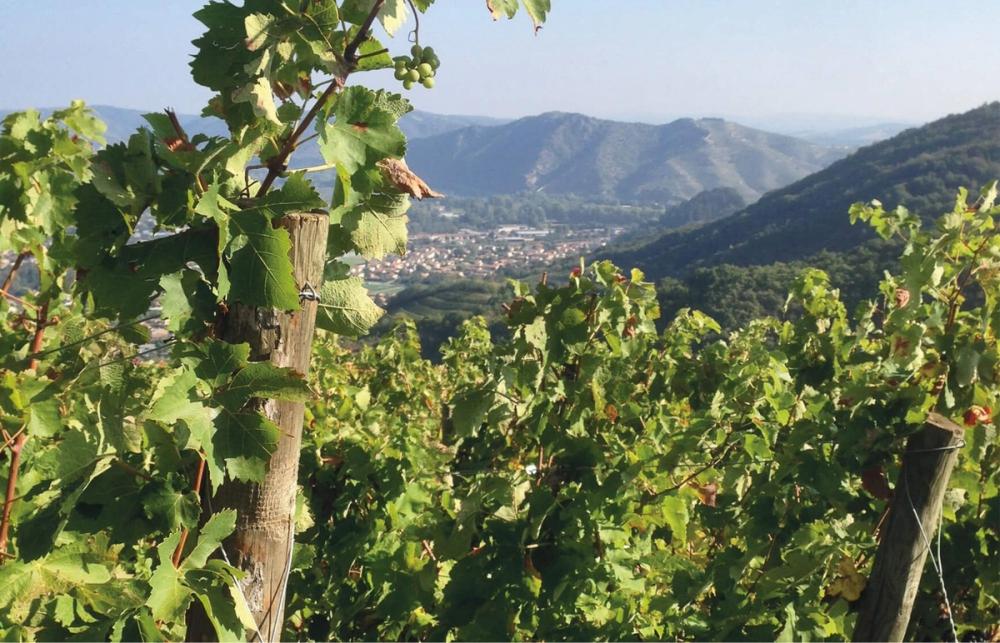
Saint Joseph, as Chapoutier explained, has a much more special range of soils than many give it credit for. It has crops of limestone throughout that give grape vines a perfect growing platform throughout the Mediterranean, but it’s really the granitic soils that make Saint Joseph special in the Northern Rhône. As you travel across the region the granitic walls of the terraced vineyards show pockets of reflective quartz that beam the sunlight towards the vines. They are magmatic in origin and the splits and fissures allow the vine roots to penetrate deep into the ground to search for water reserves, something increasingly important in the increasing prevalence of drought years.
Chapoutier mentioned another, less obvious, upside to the granitic soils.
“It’s an interesting decision for us when we plant a new vineyard, do we go black grapes or white grapes?” reflected the winemaker. “Granite can welcome both which gives us many options.”
Planting Syrah on granitic soils gives distinct mineral notes to the wines of Saint Joseph. On the other side of the river, in Crozes-Hermitage, the Syrah wines are all about fruit, elegance, and simple enjoyment. In Saint Joseph, however, to taste the wines from granite or even limestone soils, the Syrah has a particular style and is dominated by the character of the earth.
“We use a saying when we compare the two,” mused Chapoutier, “Syrah covers the soil in Crozes, while the soil covers the Syrah in St Joseph!”
The white wines of the region are also subject to the same mineral bite. Chapoutier’s own whites are made exclusively from Marsanne, whose salinity and bitterness can give the impression of tannin, making these wines a perfect bridge between wine and food. He doesn’t use Roussanne himself due to the issues of oxidation, and its potential lack of ability to age. He also credits a subtle increase in the yields for the success of his Saint Joseph whites.
“I started with vines producing only 15-20 hl/ha, thinking concentration was the goal, but it didn’t bring elegance and finesse, it was sometimes more battering and brutal. Now at 35 hl/ha the wines are vin gourmand, designed for pleasure, not just intellect.”
Despite the options, it’s not always plain sailing. Vines can sometimes struggle to establish well on granite soils, but again Chapoutier looked to the positives: “It’s like having a spoiled child versus one that has a hard youth and then seeing how they thrive. Once established, the vines on granitic soils give us so much pleasure.”
Old vineyards just waiting for new life
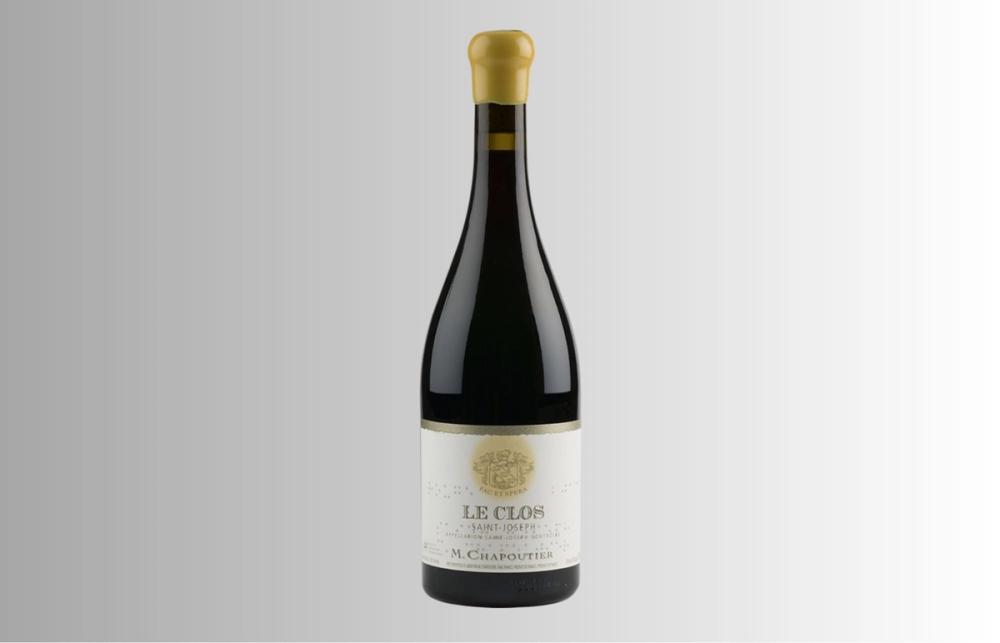
An area of acute interest for Chapoutier is the way in which the areas of planted vineyards have changed over the years. Ever since taking over from his grandfather in 1990, he was made fully aware of the history of some of the plots that had been left to go wild or forested. Indeed, the story behind the replanting of the producer’s most celebrated vineyard in Saint Joseph is all to do with remembering local history.
“The first place I had an interest in, my grandfather came to me and told me it used to have a wonderful vineyard on site,” he remembered. “The owners used to sell mineral water from a spring in a local forest but lost their licence under the Vichy French government in WW2, so they couldn’t afford to develop the vineyard anymore. I bought it, rebuilt it, and that’s my Le Clos.”
Chapoutier went on to talk about more such areas within Saint Joseph. The perils to the vines of phylloxera, and then to the workers of both World Wars, saw the great vineyards disappear, with many still waiting to be resurrected to their former vinous glory. These are the plots, according to the winemaker, that will take Saint Joseph to the next level as a wine producing region.
“We know the microbiology of the soils is transforming the quality of the soil for the vineyards. Despite 60 to 80 years of agrochemicals, the soil still remembers and it’s our job to rediscover the forgotten soils.”
It is also, according to Chapoutier, Saint Joseph’s best hope of mitigating the pressures of climate change.
“We have a fabulous neuroscience research facility in Tain L’Hermitage that is working on the idea of epigenetics, which is the study of how your environment alters the way you read your own DNA,” he explained. “We now know that epigenetics is extremely active within vegetation, so together the soils and the vines create a unique combination that adapts as the years pass.”
As an example, he referred to the wines made in periods of warmer weather in the 2010s that gave jammy fruit. By 2020 the wines were beautiful, almost cold climate, under the same conditions.
An investment sweet spot

When Chapoutier first took over the winery in 1990, the land in Saint Joseph was very cheap. Despite its relative vicinity, it was trading at a fair discount to land across the river in Crozes-Hermitage. Perversely, this actually made investment harder. “The land was cheap and the wines were relatively cheap,” remembered Chapoutier. “It made it quite hard to gain the investment or the backing to begin work.”
Unfortunately, the theory at the time was that the banks saw an investment in cheap land that produced cheap wines as particularly risky. Only the bigger wineries could get involved for many decades. This was compounded by the topography of the region, with many slopes requiring to be worked exclusively by hand. Chapoutier estimated nearly five times the labour hours to manage land of some higher, steeper slopes compared with the lower slopes or even the flat lands. The evolution in style, quality and ownership had to be managed alongside the costs.
Now, however, as the prices rise slowly, many areas of Saint Joseph are ‘back into play’. The investment is available, but the land is still relatively affordable for new or young winemakers to take the plunge.
The future of Saint Joseph
Many have questioned about whether to split the appellation, or even simply to shrink it to include only the supposed higher quality hillside sites. It’s something that Chapoutier particularly disagrees with.
“It’s difficult to make a classification with the 400m level. To work and make more selections, you create tension between people. The strength of the appellation is the people as a team to build the brand. All wineries make their own selection between the slopes and the flatland. Let them.”
So, what is it that Chapoutier thinks needs to happen next for Saint Joseph?
“All I want to see is those old, historical vineyard plots brought back into existence. Admittedly it’s not cheap to clear the vegetation, terrace the slopes, and then plant the vines, but it needs to happen.” Over time the rejuvenation of the historic vineyards will make both viticultural and economic sense allowing the wines of Saint Joseph to cement that separate identity, he believes.
The future quality of the region is also looking particularly bright.
“Premiumisation is a huge avenue for the wines of Saint Joseph,” continued the winemaker. “I’m not talking about high end this or high end that, I’m talking more about when you go to a hotel and you get upgraded to a nicer room. That’s what is happening in Saint Joseph right now, with the winemakers that are here. It’s an unfinished project, but I am willing to bet that in 10 to 15 years’ time that the wines of Saint Joseph will be spoken of on the same level as Cornas or Côte Rôtie.”
Michel Chapoutier is the owner of M.Chapoutier, a winery and négociant business situated in Tain-l’Hermitage in the Rhône region in France. For more information about Michel or his wines please visit his website here or contact their importer in the UK, Hatch Mansfield, by emailing Deborah Zbinden on DeborahZbinden@hatch.co.uk
This interview was arranged by Inter Rhône. For more information on the wines of the Côtes Du Rhône, please contact Solenn Guillermin at sguillermin@sopexa.com
Mike Turner is a freelance writer, presenter, and educator and regular contributor for The Buyer through his editorial company Please Bring Me My Wine. He also runs a wine events business, Feel Good Grapes (www.feelgoodgrapes.com), that explores and discusses the idea of sustainability in the wine trade.
